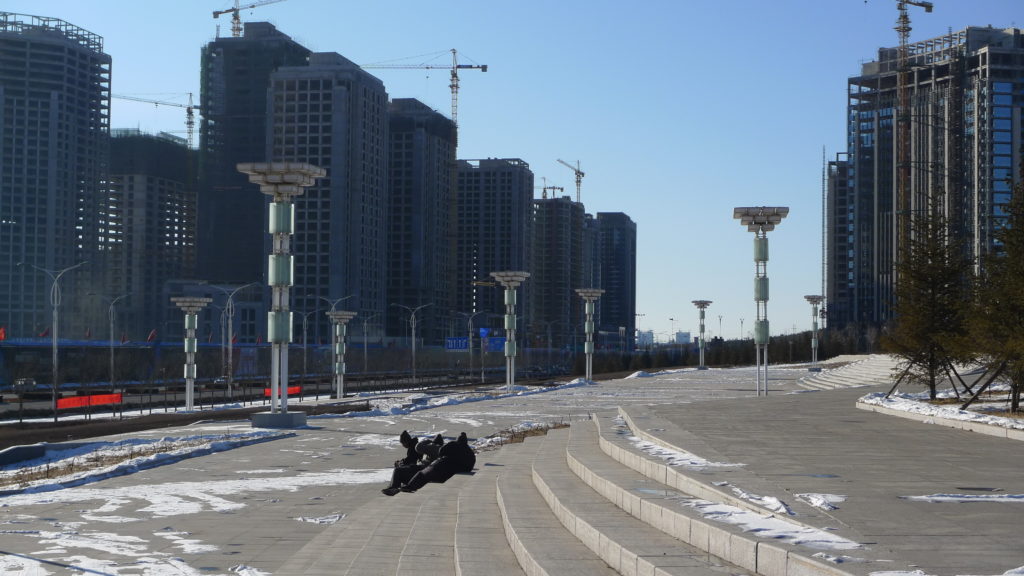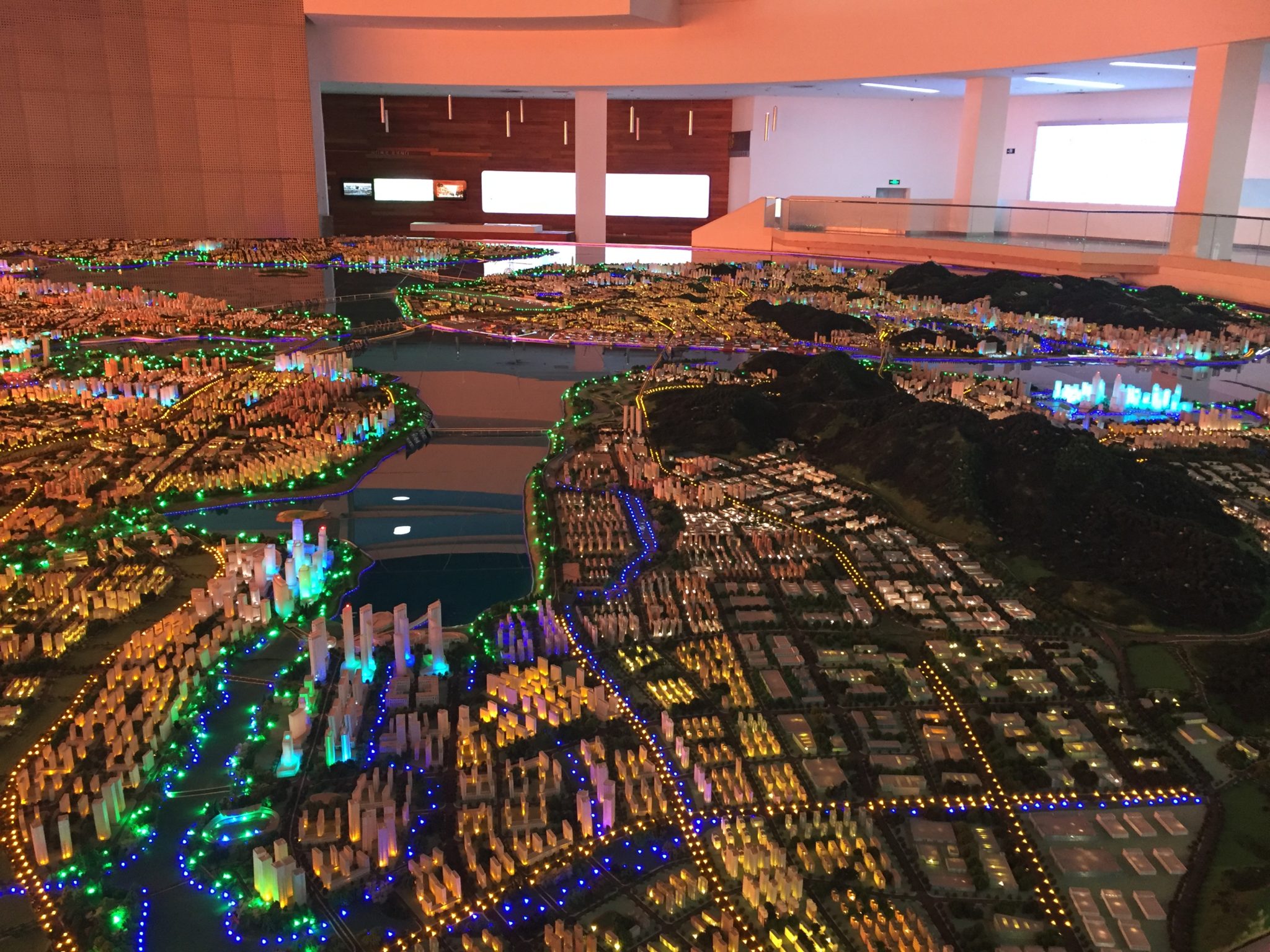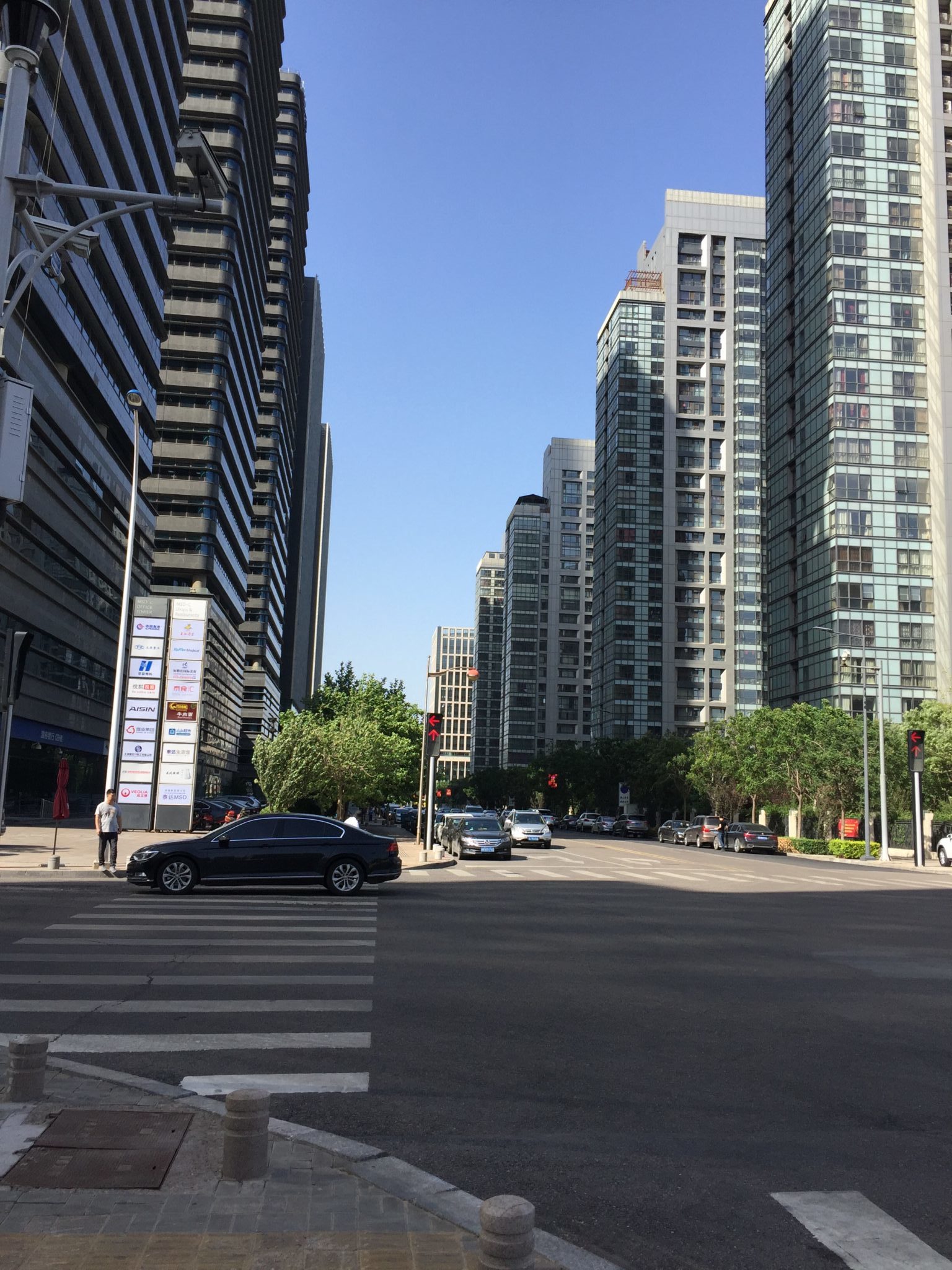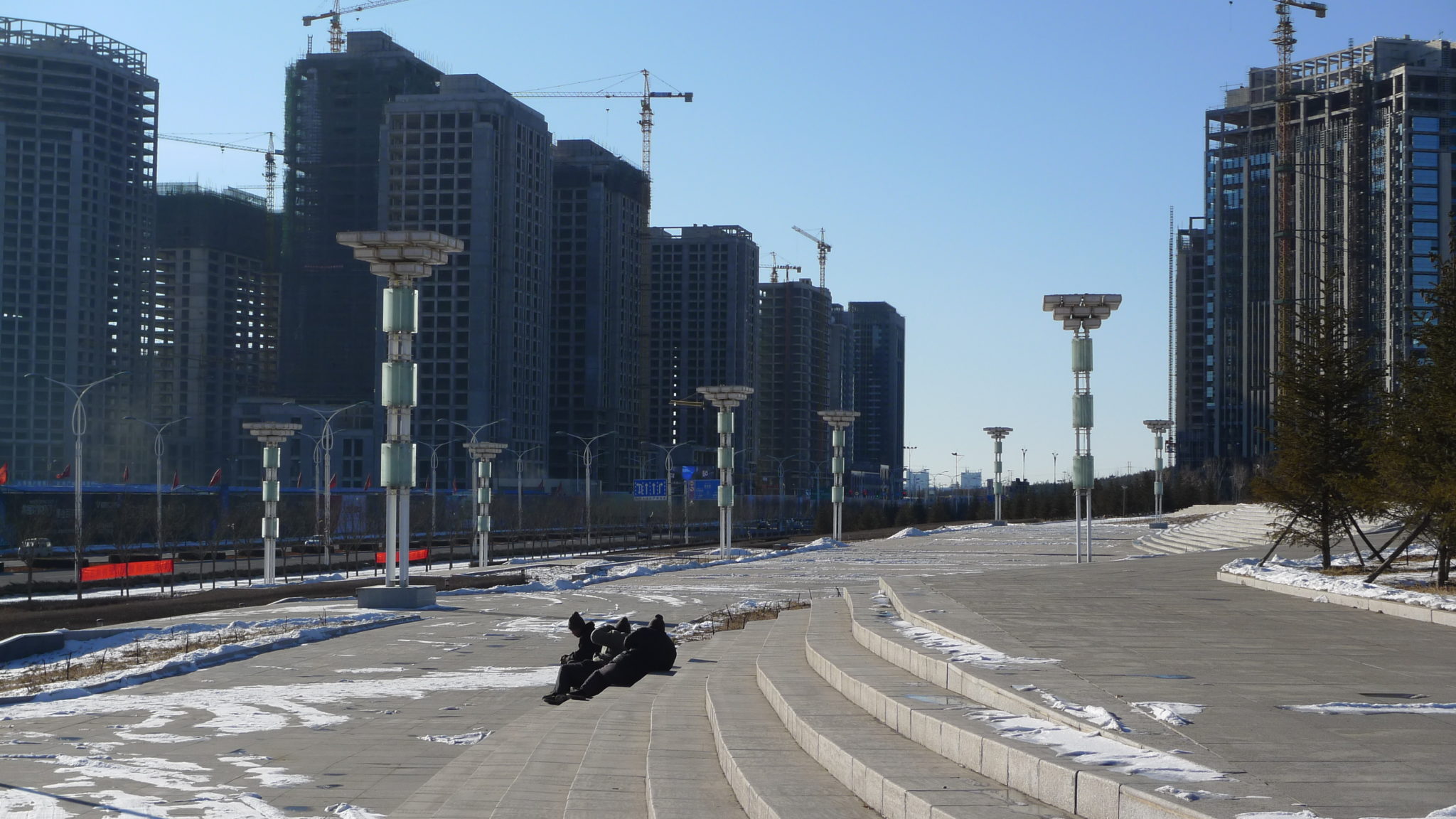The Construction State 2.0 – New towns and the local state in China

DOI reference: 10.1080/13673882.2018.00001028
By Max Woodworth, The Ohio State University, USA
In this Frontline article, Max Woodworth discusses China’s massive urbanisation project. Drawing on the examples of similar development patterns that took place during the 20th century in Japan, he suggests the idea of the ‘construction state’ is valuable to understanding how the state, construction industry and banks are aligned to deliver large-scale urban expansion in China.
In recent decades, urban and regional scholars have paid increasing attention to the rapid growth of East Asia’s cities and the governance regimes promoting metropolitan expansions throughout the region. China looms large in these discussions by virtue of its massive population and territory, but also the self-evident ambition of city administrations across the country to expand their cities through the unceasing urban construction of all types: housing, shopping centers, office parks, industrial zones, government offices, and a litany of infrastructural projects, many of them geared toward re-branding cities with extravagant architectural or engineering landmarks (World Bank 2015).
The combination of public works projects and profit-oriented land and property development, as well as the mix of private and state capital that have characterized China’s building frenzy since the 1990s defies any simple classification of urban-regional growth as state-driven or purely symptomatic of neoliberalizing tendencies to privatize the public realm. However, the concept of the “construction state”, originally used to explain post-war Japan’s construction-fixated regional governance regime, offers a useful heuristic to theorize China’s urban-regional growth in a way that avoids sticky debates about the nature of the actors as either state or market-rooted, and instead focuses on the relevant relationships among key actors that foster construction. While construction is pervasive across China, the peculiar dynamics of a Chinese construction state at work are perhaps nowhere more apparent than in the recent proliferation of large-scale suburban new-town projects. The creation of these projects has cemented local level construction states as a potent and durable institutional form whose singular purpose is to build cities.
Figure 1. A scale model of the city of Xiamen and two of its new towns, Xiangan New District and Haicang New District, displays the ambitions of the growing city.

In its original conceptualization, the Japanese construction state (J. doken kokka) was defined by a triangular relationship among the reigning Liberal Democratic Party’s functionaries at various levels of the state, the construction industry, and the banking sector (Broadbent 2002; McCormack 2002). Under this framework, politicians and bureaucrats prevailed upon banks, sometimes at the behest of construction companies, to fund building projects of all types and sizes. Such projects had the obvious benefits of boosting employment and stimulating growth, thus burnishing the image of the ruling party among workers and locking in collusion and patronage. This solid institutional edifice propped up the LDP as the virtually unchallenged political party in post-war Japan. It also abetted a gigantic infrastructural push that saddled the country with the largest publicly-held debt load of any industrialized nation, while it also severely altered and degraded ecosystems. China’s city-based growth coalitions show a striking family resemblance to Japan’s doken kokka both in terms of their internal relations and their concrete results. As in Japan, China’s local leaders at the municipal and sub-municipal scales have relied heavily on land development as an engine of metropolitan growth. Nationally, the construction sector has accounted, on average, for 6 percent of GDP between 2010 and 2017, a share that matches Japan’s at the height of its boom in 1990. China’s urban construction binge of the 2000s has radically reshaped metropolitan regions, contributing to sprawl and an overall reduction in urban population densities.
Figure 2. The new central business district of Tianjin’s Binhai New Area anchors a sprawling urban expansion zone of 2270 kilometers square subdivided into seven functionally specific zones and new towns.

In China, the rise of new-town projects throughout cities’ hinterlands has been key in driving the consolidation of construction states. “New town” is meant here as a generic term to capture what is, in fact, a broad and frequently changing category of growth projects typically located in suburban areas. An incomplete list of project types includes so-called “new areas” or “new districts” (Ch. xinqu), new towns (Ch. xincheng), technology and economic development zones, university towns, free-trade zones, and airport cities. What is interesting about such projects is their actual functions are not always denoted by their titles; industrial development zones, for example, commonly feature a significant share of residential floorspace. Currently, there is no official count of new-town projects, though an inclusive category would easily have several hundred such projects. My research has shown that new towns, broadly defined, can be found in every province and prefecture-level city (This article is based on research conducted under an RSA Early Career Grant Scheme award 2016-2018, titled “Assessing Project-led Development in China’s New Towns.”).
Given the size and long-term cost of such undertakings, it is little wonder that they have been a decisive shaping force on the state from the central level to the sub-municipal scale. How are new-town projects built in China and why are there so many? Answers to these questions reveal four vital elements of the construction state. First, new town projects are first and foremost land development projects conceived by political leaders. As politically driven land development projects, the immediate impulse for construction has little to do with assessed market demand. Rather, large projects are undertaken in an entrepreneurial spirit aimed at drawing investment in order to stimulate demand and ignite broad-based economic growth. In city after city surveyed as part of this research, plans for new towns were hatched in city hall almost as soon as a new mayor or local Communist Party secretary assumed office. This pattern of administration has led to a steady stream of announcements in cities for new, large suburban growth projects on a continual basis, as municipal administrations are reconstituted typically every five years or less (Chien and Woodworth 2018). The frequent reassignment of municipal leaders to new positions in different places has meant that the construction state is led by a constantly rotating cast of political leaders, and thus its specific territorial configurations are necessarily temporary. Given the extended timescale of building large suburban projects and political leaders’ short tenures in office, new-town projects are begun during one administration’s tenure and taken up – and frequently re-adapted – by the next.
Figure 3. Construction workers rest while building the Tiexi Technological and Economic Development Zone, a new town project adjacent to the city of Dongsheng in Inner Mongolia. The new town has been plagued by high vacancy rates in commercial properties.

Second, China’s local construction states are founded on a solid basis of mutual benefit among key local actors for whom the political impulse to build is good for business. Specifically, the formulation of plans to expand through the development of whole new towns in the suburbs comes with a host of commercial property development, which has been the focus of much recent research (see Lin and Yi 2011). But such building programs also include enormous budgets doled out through centrally controlled contracting for the whole range of building activities. While bidding for government contracts to deliver roads, landscaping, bridges, government offices, schools, subterranean infrastructure and so forth is public, it is common knowledge that the process ultimately distributes public funds in politically expedient ways that ensure that diverse corporate interests are satisfied. In short, the system is geared to benefit not merely large, state-owned firms, though these tend to be awarded the highest-profile and most complicated projects, but it also showers money upon local firms of all sizes with highly varied levels of expertise in the business. Interviews with construction firm executives in a prefecture-level municipality revealed that road construction, landscaping, and tree-planting were lucrative and relatively simple areas for contracting, particularly for firms without design or engineering expertise. These rather mundane aspects of new-town development provide employment, while at the same time secure political support for newly installed leaders from important vested local interests. City leaders eager to deliver projects quickly are sensitive to the redistributive aspects of the contracting process and use it instrumentally to not just advance projects but to establish and protect channels of patronage.
Third, local construction states must overcome financing hurdles to initiate projects. Despite strong economic growth, municipalities across China are budget constrained due to the 60-percent or more share of locally collected tax revenues that must be forwarded to the central government, as well as restrictions on the types and number of fees they are permitted to collect. Moreover, municipalities are barred by law from issuing local bonds to fund development. Using a monopoly position over land tenure, cities have sought to convert much land resources into municipal revenues (Gao et al. 2008). To instigate this process, municipalities have settled on a creative solution to restrictions involving the establishment of quasi-private “city investment corporations” with project-specific mandates. Such entities are capitalized by transferred landholdings, which can serve as collateral for loans. As “private” firms, such entities can secure bank finance or issue bonds, or both. The heads of cities’ quasi-private investment firms are commonly local vice mayors or Party vice secretaries, ensuring that local political leaders maintain a direct channel to bank and other forms of project financing. The proliferation of new-town projects has brought with it a vast increase in the number of such financing platforms. Collectively, they provide indispensable avenues to mobilize development capital and commence the process of contracting projects.
Finally, a salient feature of China’s construction states underscored by the development of new towns is their modular gigantism. Projects of massive scale have been rolled out in city after city in the 2000s. The Lanzhou New Area featuring a planned area of 800 square kilometers exemplifies the creation of massive new urbanized spaces and is hardly an outlier in terms of size. Even larger projects are found on the outskirts of Tianjin (Binhai New Area), Xi’an (Xixian New District), Zhengzhou (Zhengdong New District), to name but a few. For land-constrained municipalities, reaching for large-scale projects in one go, usually through annexation of suburban rural territory into municipal control, serves a key purpose by immediately increasing the developable land at the city’s disposal. Moreover, new-town projects are managed from the outset and sometimes indefinitely through municipality-appointed commissions, thus installing parastatal governance units to supervise vast new territories under municipalities. By circumventing the creation of new territorial bureaucratic bodies, project-based governing commissions facilitate rapid project delivery. Intense inter-city competition in recent years also impels political leaders to dream big in order to not doom their development projects from the outset. According to a city planner for a major coastal city interviewed during the course of this research, evidence of ambition and bombast in the creation of massive new town projects of various sorts is an important part of making a convincing display of administrative capabilities and intent.
What is also notable about this phenomenon, however, is not merely the size of projects, which propose to build a constellation of new million-person cities across the country, but the rapid diffusion of fashionable project types leading to a remarkable replication of identically themed new-town projects. Thus, in rapid succession, Chinese cities have acquired university towns, high-tech districts, niche industry-focused new towns, and so on. The mimetic form of new town developments is an index of the political roots of construction, as new municipal regimes scramble to quickly deliver projects with recent demonstrated precedent and off-the-shelf planning schemes that can be finalized within weeks of commission. Indeed, planners interviewed for this research complained of impossibly short (eight weeks or less, in some cases) delivery schedules for commissioned detailed and strategic plans, including the standard statutory and non-statutory planning documents needed to commence projects. For the local construction state, consideration and innovation are secondary to speed and size.
The implications of new towns for China’s construction state reverberate concerns expressed about Japan’s dokken koka and are perhaps instructive for projecting the future of China’s urban-regional growth. China’s municipalities have expanded physically at a rate that outpaces the urbanization of population. This growth of the urban footprint raises urgent questions about the creation of so-called “extrastructure,” or a surfeit of infrastructure and built space (Ansar et al. 2016). High vacancy rates, high amounts of property inventory, and a string of failed new town projects labelled “ghost cities” alert us that urban growth in some places has been economically unsustainable (Woodworth and Wallace 2017). Debt is also a major concern for cities, as financing platforms for development projects have generated an astonishing accumulation of financial obligations. Impacts on environments are also severe, as more land is converted to urban purposes and new built environments create sprawl and its associated automobile dependency.
Yet despite the gigantism and flamboyance evident in the construction of new towns and other urban construction throughout China, the connected interests of the construction state help ensure it durability as a set of processes. Thus far, the central government has proved unable to seriously temper the pattern of rapid urban expansion, and the political ramifications of a financial crisis in specific projects are daunting enough that when crises have emerged assistance has been forthcoming. Moreover, planners and political leaders consistently note in interviews that China’s urbanization rate is still only 55 percent, which allows for a foreseeable transfer of several hundred million more people into cities during the coming decades. They thus conclude that there is still much more that remains to be built in China and the new towns under construction will be the basis for this coming next phase of urbanization.
References
Ansar, A., Flyvbjerg, B., Budzier, A. and Lunn, D. (2016) “Does infrastructure investment lead to economic growth or economic fragility? Evidence from China,” Oxford Review of Economic Policy, 32(3), pp. 360-390.
Broadbent, J. (2002) “Comment: The institutional roots of the Japanese construction state,” Asien, 84, pp. 43-46.
Chien, S.S. and Woodworth, M.D. (2018) “China’s Urban Speed Machine: The Politics of Speed and Time in a Period of Rapid Urban Growth,” International Journal of Urban and Regional Research, 42(4), pp. 723-737.
Cao, G., Feng, C. and Tao, R. (2008) “Local ‘land finance’ in China’s urban expansion: challenges and solutions,” China & World Economy, 16(2), pp. 19-30.
Lin, G.C. and Yi, F. (2011) “Urbanization of capital or capitalization on urban land? Land development and local public finance in urbanizing China,” Urban Geography, 32(1), pp. 50-79.
McCormack, G. (2002) “Japan’s Iron Triangle,” New Left Review, 13, p. 5-23.
Woodworth, M.D. and Wallace, J.L. (2017) “Seeing ghosts: Parsing China’s ‘ghost city’ controversy,” Urban Geography, 38(8), pp. 1270-1281.
World Bank Group (2015) “East Asia’s Changing Urban Landscapes: Measuring a Decade of Spatial Growth,” Washington, DC.